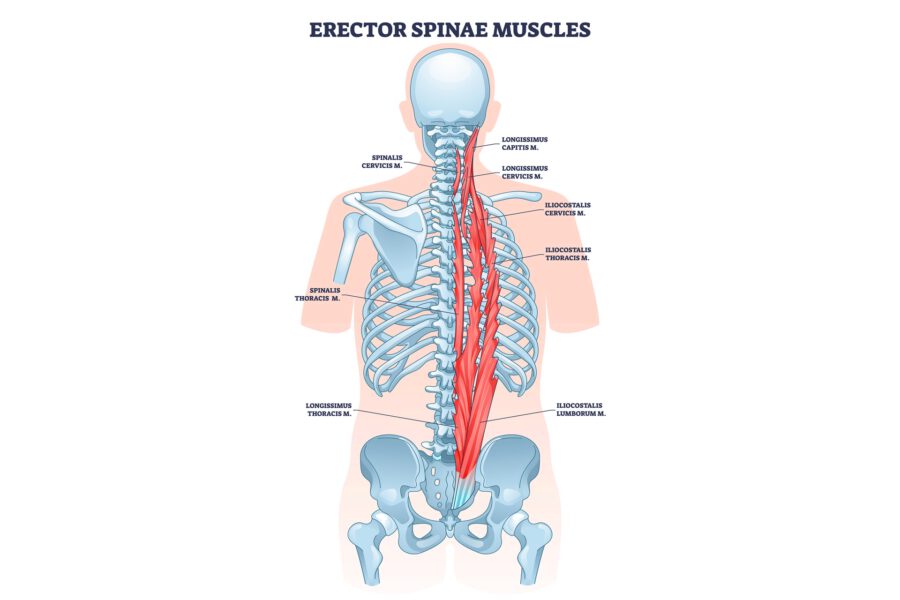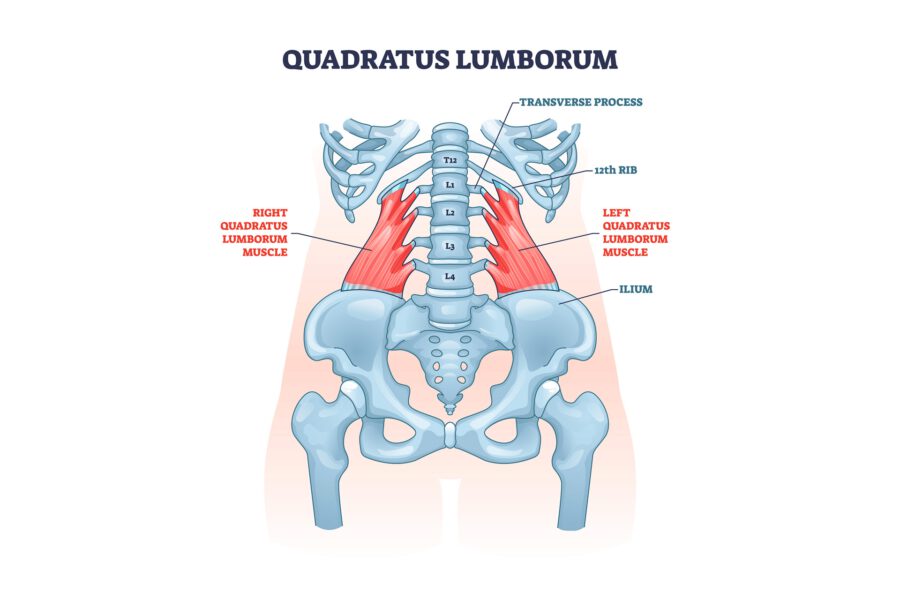Spinal Health: How to Target Your Lower Back Muscles
A strong and ‘bulletproof’ lower back is the foundation of a balanced physique and healthy spine. However, despite its crucial role in everyday movement and injury prevention, the lower back muscles are often overlooked in many workout routines.
In many cases, people who try to build their lower back muscles fail to target them effectively. This neglect can lead to disproportionate strength distribution, which not only affects athletic performance but also increases the risk of injuries if left unchecked.
Targeting your lower back muscles regularly is not just about aesthetics. It is about building a strong body equipped for the challenges of daily life. The lower back is a complex structure of muscles and ligaments that supports the weight of the upper body, provides mobility in multiple directions, and enhances proprioception or the body’s position sense. However, a sedentary lifestyle and improper training can lead to the weakening of this crucial area.
This article will dive deep into the importance of building optimal strength and stability in the lower back region and how you can effectively target your lower back muscles.
The spine is unstable without the crucial support of the deep muscles of the lower back. These primary muscles include the erector spinae, quadratus lumborum, and the multifidus. They work harmoniously to support the spine, facilitate movement, and protect the vertebral column from injury.
These muscles run vertically along the entire length of the spine, from the sacrum to the base of the skull.
Function: They are primarily responsible for extending the spine, allowing for standing up from a bent-over position, and also play a role in side bending and rotating the spine.
Strength and Endurance: These muscles are crucial for maintaining posture and are engaged in activities that involve lifting and carrying.
Injury and Rehabilitation: Due to their role in spinal movement and support, the erector spinae are often a focus in rehabilitation programs for back pain.
The quadratus lumborum is a deep muscle in the lower back located on either side of the lumbar spine. It stretches between the lowest rib and the top of the pelvis.
Function: It helps to stabilize the pelvis when a person is standing and also assists in lateral flexion of the spine (side bending). It plays a significant role when you lift something on one side of your body.
Posture and Movement: It is often called the “hip hiker” because it can raise the hip on one side. This muscle is also active during deep breathing, helping to stabilize the diaphragm.
Pain and Discomfort: A tight or overworked quadratus lumborum can be a common source of lower back pain, often due to its role in compensating for other weak or imbalanced muscles.
Despite its small size, multifidus is the most powerful muscle that gives support to the spine. It is a series of muscles that are attached to the spinal column, providing stiffness and stability the spine needs during movement.
Function: This muscle is critical for stabilizing the joints within the spine during movement, preventing unwanted movements and controlling the load distribution on the vertebral discs.
Core Stability: The multifidus is considered a part of the core musculature, and its strength is essential for a healthy back.
Degeneration and Recovery: Research suggests that atrophy or weakening of the multifidus can be linked to chronic back pain, and strengthening it can be key to recovery and prevention of future back issues.
About 80% of the world population experiences low back pain due to muscle weakness or lack of neuromuscular control in the lower back region. Even seasoned athletes and veteran gym enthusiasts are not immune to this condition. In fact, tons of athletes suffer from chronic inflammation and back pain due to muscle imbalance and lack of effective targeting of the lower back muscles.
Poor muscle control in the lower back also contributes to decreased proprioception in deep muscles in the region. Proprioception is the body's ability to perceive its position in space, and the lower back's role in this sensory feedback system is crucial.
When muscles contract or lengthen, the sensory receptors within the muscles send signals to the central nervous system so that the brain can figure out the current position of the body.
A strong lower back enhances proprioceptive abilities, improving balance and coordination.
While it is true that exercise is medicine, it is a different case when you have low back pain to begin with. Contrary to popular belief, traditional back extension exercises, such as the Superman exercise, put tons of compression stress on the lower back region, which can aggravate cases of lower back pain and nerve irritation.
Just like any medication, a specific exercise is needed for a specific condition
Here are the key exercises to target the lower back muscles while minimizing the risk of excessive spinal compression and preventing injury.
Deadlifts and squats are non-negotiable and should be a main staple exercise for lower back strength. They target the erector spinae muscles and require the engagement of the entire posterior chain.
Proper form is key to reaping the benefits of these compound exercises while minimizing the risk of injury. However, if your lower back is too weak, it could be challenging to perform these exercises effectively, and you might be better off doing some back extension exercises first to build low back strength.
Back extensions focus on isolating the lower back muscles. When performed correctly, they strengthen the erector spinae without placing undue stress on the spine. It's essential to avoid hyperextension to maintain the integrity of the vertebral column and prevent excessive spinal compression.
The Roman chair and the GHD machine are excellent ways to isolate the lower back muscles during back extension workouts and prevent the hamstrings and glutes from overpowering the lower back during an exercise.
You’d be surprised to find that a lot of people with chronic lower back pain actually have strong back muscles but lack necessary neuromuscular coordination.
The bird dog exercise is excellent for improving lower back stability and neuromuscular control. It challenges the core and lower back muscles to work together, enhancing the coordination and proprioceptive abilities of your body.
A balanced lower back routine is the key
Core Integration:
A strong core complements a strong lower back. Incorporating exercises like planks and bridges can help build a solid foundation that supports the lower back muscles. A strong core is linked to lower chances of having back pain.
Flexibility in the hips and hamstrings can alleviate unnecessary strain on the lower back. Incorporating stretching and mobility work into your routine can improve overall back health.
Foam rolling can also help to loosen up some ‘tight’ areas of your lower back, hips, and legs, allowing you to be at your peak during your lifts.
Starting your workout with dynamic warm-ups can prepare the lower back for the exercises ahead. Movements like cat-cows and torso twists can increase blood flow and reduce the risk of strains.
Train your core, improve your mobility, and always warm up to complement your lower back training
Progressive overload
To build strength, progressively increase the weight or resistance in your lower back exercises. This gradual increment will challenge the muscles and lead to gains in strength and endurance.
Here’s a plan for women you might be interested in:
And for men:
The lower back should not be overworked. Aim for targeted lower back training 1-2 times per week, allowing ample recovery time to prevent overuse injuries.
Pay attention to your body's signals. If you experience pain beyond the usual muscular fatigue, reassess your form, the weight used, and your overall approach to lower back training.
Building your back strength is a journey. Don’t rush
The low back region is an often overlooked area when it comes to a fitness routine. A sedentary lifestyle and improper exercise execution could lead to ineffective targeting of the lower back muscles, resulting in muscle imbalance that could lead to an increased risk of injuries in the long run.
Incorporating key exercises such as deadlifts, squats, back extensions, and mobility exercises into your routine can positively impact your gains and promote a healthier spine.




